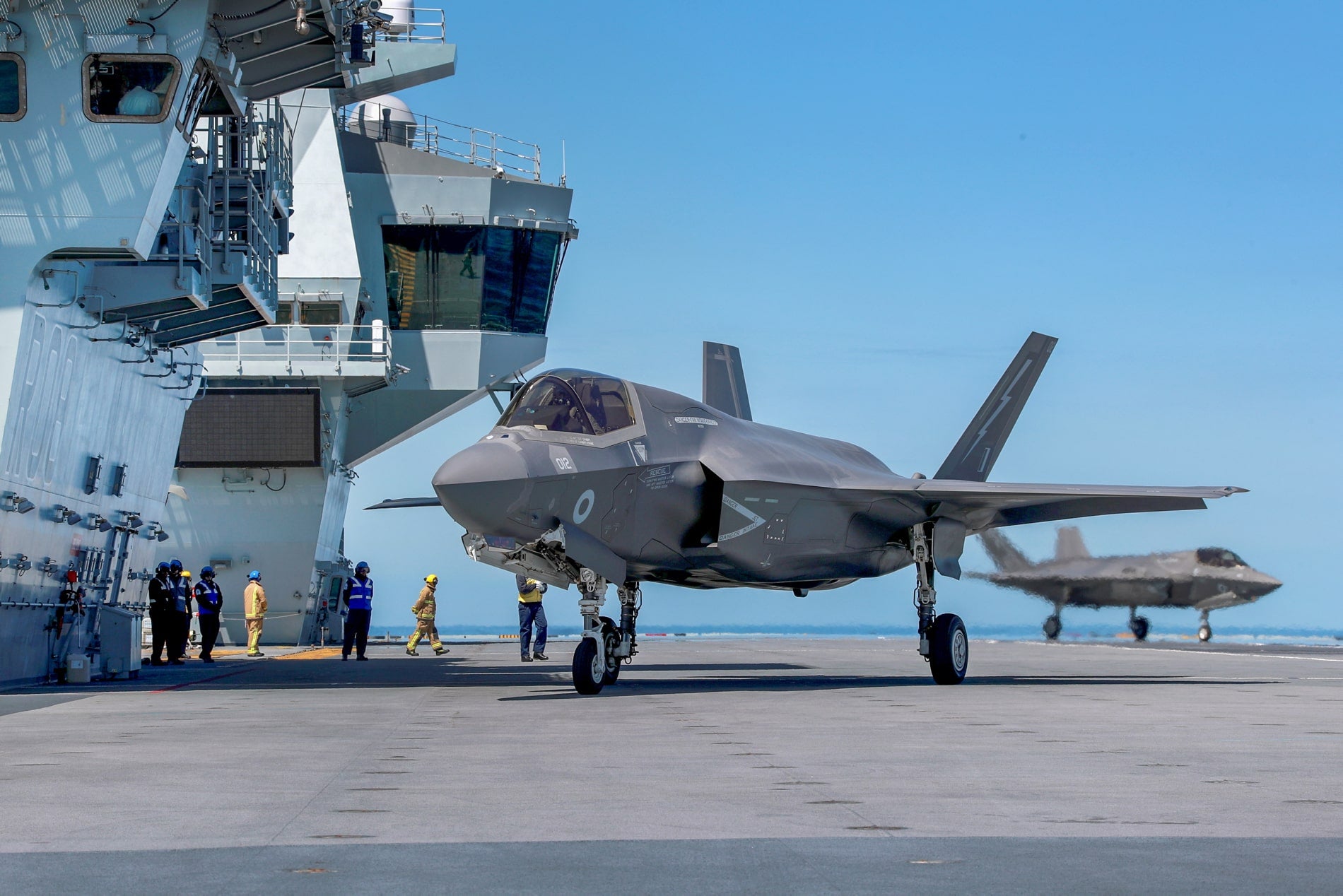
Speaking to MPs, Lovegrove said: “We will be buying the F-35s for another 20 years or so, and they have been in the pipes for 15. In the course of projects such as that, things change. In 2015, the SDSR said that we were to buy 138 F-35Bs; there was no mention of the future combat air system—Tempest, as it is more snappily known.
“Things change in the course of these very long-term programmes. Different capabilities come along that render things that you have yet to buy possibly obsolete, or perhaps you need fewer of them, or the threats change.”
So far, the UK has ordered 48 F-35Bs, all of which are set to be delivered by 2025. The final number of F-35s has been cast into doubt by the need to fund the development of the Tempest future combat air system (FCAS).
By 2025, the current fleet would allow for 24 jets to be deployed between each of the UK’s new Queen Elizabeth-class aircraft – however, the UK at current only plans to deploy one aircraft carrier at a time. The UK’s F-35 fleet will be split between two operational squadrons and one training squadron.
Tempest is the joint UK, Italian and Swedish programme to develop a family of aerial systems, including a crewed fighter jet that will replace the Royal Air Force’s (RAF) Eurofighter Typhoons from 2035 onwards.
Commenting on the balance between investment in Tempest and the acquisition of F-35s Royal United Services Institute (RUSI) research fellow and editor of RUSI Defence Systems Justin Bronk told Air Force Technology: “The Tempest vs F-35 order numbers trade-off is politically complex but in terms of outputs it is straightforward.
How well do you really know your competitors?
Access the most comprehensive Company Profiles on the market, powered by GlobalData. Save hours of research. Gain competitive edge.

Thank you!
Your download email will arrive shortly
Not ready to buy yet? Download a free sample
We are confident about the unique quality of our Company Profiles. However, we want you to make the most beneficial decision for your business, so we offer a free sample that you can download by submitting the below form
By GlobalData“Since Tempest will not produce a viable combat air fleet until the end of the 2030s at the earliest, funding put towards Tempest instead of F-35 orders represents a direct reduction in UK combat air capabilities over the next 20 years in exchange for industrial and economic benefits in the UK military aerospace sector.”
In the same hearing, Deputy Chief of Defence Staff Air Marshal Richard Knighton suggested that after the current 48 jets were ordered, the UK would not be ordering more F-35s until after 2025. Knighton also acknowledged that there was a need to acquire more than 48 jets.
Knighton said: “But as we have said before to the committee, and as I mentioned earlier, we acknowledge that we need to increase that number.
“That is the part of the work we are doing at the moment with Ministers as we establish the plans on the basis of the settlement that we have achieved, but I would not want to get out in front of Ministers and pre-empt ministerial decisions.
“As we have said before, our expectation is that we will buy more F-35s in the second half of the next decade, to improve the capacity.”
For HMS Queen Elizabeth’s maiden operational deployment later this year, the ship will embark F-35Bs from the UK and US Marine Corps. At the current rate, the UK will be able to deploy a carrier with a full complement of British jets in 2023.
Bronk told Air Force Technology that the minimum viable fleet of F-35s for the UK would depend on ‘what the capability ambition is’. Adding that if the UK wanted to have a force ‘simply capable’ of generating 12 to 24 fighters for carrier operations and in extreme conditions the ability to surge to 36 aircraft – a fleet of around 60 F-35s would be enough.
However, Bronk added that when attrition and the need to replace early-lot aircraft was factored in, the UK would need to buy around 70 F-35s to maintain a 60-jet fleet over its lifetime.
Bronk added: “ If the ambition is to provide penetrating ISTAR, strike and SEAD capabilities in support of the joint force in a NATO context in addition to regular carrier deployments with a global reach, then a number much closer to 100 is the realistic minimum purchase.
“Budget constraints coupled with industrial and political ambitions for Tempest mean that the former is the more likely eventuality, whilst the latter ambition will remain, which will leave the F-35 force permanently over-tasked and unable to deliver the full range of capabilities assumed by planners across the different services.”
Defence analysts have long held the view by that the UK would end up buying a smaller fleet of aircraft. Senior figures within the department have hinted in the past the final fleet would be smaller than originally called for.







